The 9 inductees of the 2020 CCEE Hall of Fame represent an inspiring, interesting, and influential group of alumni. The wide array of fields and list of accomplishments from this year’s inductees is an illustration of the numerous career paths available to civil engineers. Their areas of expertise range from sustainable development of hydropower, to shipbuilding, solid waste management, geotechnical seismic design, naval command; and include the founding father of our academic department at NC State. Collectively they have designed and constructed infrastructure throughout North Carolina, the United States, and around the world, and mentored and influenced thousands of other engineers.
“We have a fantastic group of highly accomplished inductees, and I am very proud to have each as an alum of our department. This year’s inductees include leaders in businesses, large engineering consulting firms, government labs, and construction companies. It includes individuals who rose to the absolute top leadership positions in the military, and in academia. It includes national academy members, presidents of professional societies, and 9 of our alumni who have given tirelessly to the profession and their communities.” Dr. Morton Barlaz, Department Head
Our department has more than 14,000 alumni, so being selected for the CCEE Hall of Fame means an individual represents the top 1% of our alumni in terms of professional achievement and service. We typically hold an induction ceremony each Fall in conjunction with the University’s Homecoming week, but unfortunately this year is anything but typical. The department hopes that by Fall of 2021 we will be able to have a face-to-face ceremony where inductees and their friends and families will be able to gather in person. Past induction ceremonies have been inspiring and always full of amazing stories that paint a diverse and interesting picture of the breadth of influence of our CCEE alumni on infrastructure, research, and service.
“The hall of fame induction ceremonies are such an inspiration. These inductees’ contributions offer a lens to the impact an individual can have – to a community, industry and society. Their leadership and counsel have helped to shape the careers and lives of those they have mentored. I have been fortunate enough to attend many of the induction ceremonies, and each time I leave with a renewed excitement for what it is possible to accomplish. Although this year’s ceremony will not be in person; the individuals, their stories and their accomplishments are no less inspiring.” Gray Talley, CCEE Advisory Industry Board President
We sincerely congratulate this year’s inductees. You can read short profiles of each below.
You can read more about selection criteria at the end of article, as well as instructions for how to nominate individuals for the 2021 CCEE Hall of Fame.
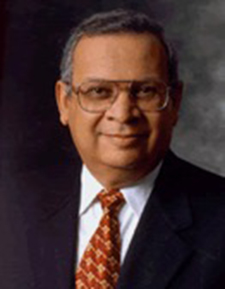 Refaat A. Abdel-Malek. MSCE 1969, PhD 1972
Refaat A. Abdel-Malek. MSCE 1969, PhD 1972
Dr. Refaat A. Abdel-Malek is Vice Chairman Emeritus of MWH Global, Inc. He was the CEO of Harza Engineering Company prior to its merger with Montgomery Watson and the formation of MWH, which is one of the leading Water, Energy and Infrastructure Consulting Firms in the world. Abdel-Malek is an expert on hydropower and its sustainable development. He was responsible for the design and construction management of some of the world’s most complex hydropower projects including the 10,000-MW Guri Hydroelectric Project, the 2,770-MW Macagua II Hydroelectric Project, and the 2,450-MW Caruachi Hydroelectric Project, all on the Caroni River in Venezuela. He also served as a senior consultant for the Three Gorges dams in China, one of the world’s largest waterway and hydropower projects to date.
In 2014, Abdel-Malek was awarded the ASCE Rickey Medal for outstanding contributions to hydroelectric engineering, leadership in the delivery of the world’s largest and most complex projects, and his commitment to the advancement of sustainability in global hydropower development. His efforts have been motivated by addressing the shortages of reliable energy and clean water, especially in developing countries. He served as President of the International Hydropower Association (IHA) for 6 years an organization with a mission “to advance sustainable hydropower by building and sharing knowledge on its role in renewable energy systems, freshwater management and climate change solutions.”
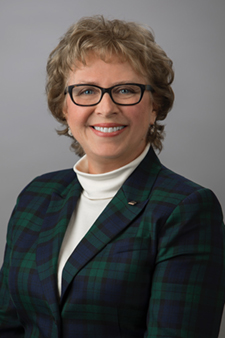 Suzanne Beckstoffer – BSCE 1982
Suzanne Beckstoffer – BSCE 1982
Immediately upon graduation, Beckstoffer began work as a structural engineer at Newport News Shipbuilding, where she spent her entire career. At the time of her retirement, she held the position of Director Engineering, University & Manufacturing Initiatives. During this assignment, she had a staff of 40 and directed the migration of a new aircraft carrier design to new product model and lifecycle management software. The project represented hundreds of millions of dollars in value and required near-perfection. Earlier in her career, she led the installation of robotic steel fabrication equipment, and directed research and development programs for aircraft carriers and submarines.
Beckstoffer was appointed to the ABET Industry Advisory Council in 2016 and to the Marine Board in 2020. She is president of the Society of Naval Architects and Marine Engineers (SNAME), an international professional organization for the maritime and offshore communities with 6,000 members in 95 countries. She also serves as Chairman of the Board of BayPort Credit Union, a $1.7B financial institution with 140,000 members and 23 branches, headquartered in Newport News, VA. Suzanne has championed financial literacy, and as a result of her dedication, the credit union now teaches financial literacy to over 50 schools in communities where the credit union has a branch.
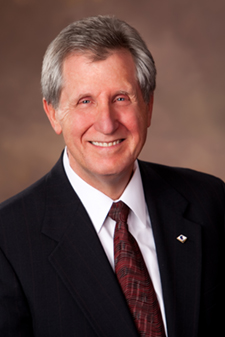 Otis A. Crowder – BSCE with Construction Option 1970.
Otis A. Crowder – BSCE with Construction Option 1970.
Upon graduation, Otis Crowder joined a family owned business, learning the business from the ground up and gaining experience in every facet of the company’s operation. He was named President of Crowder Construction Company in 1984. Since a Corporate reorganization in 2007, Crowder has served as Chairman of the Board of Crowder Constructors Inc. and as a Board Member and Officer of Crowder subsidiary companies.
The Crowder companies, now 70 years old, remain family and employee-owned. Under the leadership of Otis Crowder, and W.T. Crowder, sons of the founders, they’ve grown from a small concrete company serving the Carolinas to a major general contractor serving the southeastern United States. They build bridges, dams, highways, water and wastewater facilities, industrial and power facilities, and alternative energy facilities, including solar and biomass.
The company has been recognized as a workplace that invests in its employees and the community. Their website proudly reads: “We put our hard hats down and step away from the job site to get involved with the people in our community. You might find Crowder employees collecting toys for children, walking to raise money and awareness for cancer, heart disease, and juvenile diabetes research, or hitting the links to support a charitable cause.”
Otis Crowder serves on many community organizations including Habitat for Humanity. He also served on the NC State Engineering Foundation from 2008 – 2014.
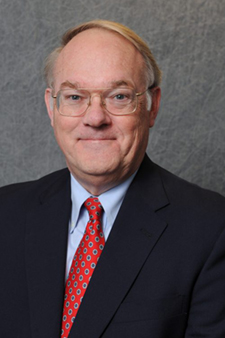 David Johnston – BSCE with Construction Option 1966, MSCE 1968, PhD 1972
David Johnston – BSCE with Construction Option 1966, MSCE 1968, PhD 1972
David Johnston holds a unique position in that all of his degrees are from our department, and he has worked in the department tirelessly since he completed his PhD. He provided leadership for the construction program for four decades, including preparing for ABET-EAC accreditation of the B.S. program. He served as Associate Head and Director of Graduate Programs for a ten-year period which featured significant department wide growth in graduate enrollment.
Johnson’s research has had major impacts on engineering practice and national standards in bridge management systems, highway systems, and concrete formwork. With respect to formwork, he is author of the 8th edition of the heavily used ACI SP-4 Formwork for Concrete published in 2014. The new 512-page edition is the first in color and involved replacing almost 500 photographs and drawings.
Johnston’s career awards are many, including the ASCE Roebling Award in recognition of outstanding contributions to the advancement of construction engineering. In 2019 he received the – Distinguished Examination Service Award by the National Council of Examiners for Engineering and Surveying. He was inducted into the National Academy of Construction in 2015.
At the national level, Johnston held leadership roles in the American Society of Civil Engineers (ASCE) and the American Concrete Institute (ACI). He led the 10-year effort to have Construction Engineering be recognized by the National Council of Examiners for Engineers and Surveyors and state engineering licensing boards as a discipline for the Professional Engineering exam, and subsequently the effort for initiating and then managing the ongoing exam module.
In summary, throughout the last five decades, David has contributed a truly extraordinary combination of professional accomplishments and ongoing service to the department, the university, and the profession. Most recently, he has lent a calm hand in numerous aspects of the design and move to the department’s move to our new building on Centennial Campus, during a pandemic!
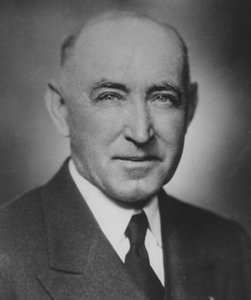 Carroll Lamb Mann, Sr. – BSCE 1899, Degree of Civil Engineer, NC College of Agriculture and Mechanic Arts, May 1906
Carroll Lamb Mann, Sr. – BSCE 1899, Degree of Civil Engineer, NC College of Agriculture and Mechanic Arts, May 1906
Awarded Posthumously
Many consider Mann as the father of Civil Engineering at NC State. He served on the NC State College Civil Engineering faculty from 1901 until his retirement in 1948, including as head of the department for 32 years. He is the longest serving faculty member, and longest serving department head in the history of the department. During his tenure as department head, a new building for civil engineering was planned and constructed, many of the specialties of civil engineering were developed in the curriculum, and research was initiated in labs appropriate for that era. He had two buildings named for him, including the current Mann Hall, which housed CCEE from 1963 thru 2020. Mann also served as Chairman of the Alumni Memorial Bell Tower Committee for over twenty years, including heading the efforts of the Alumni Association to raise funds for the construction of the Bell Tower. As the department moves from Mann Hall, it is with gratitude and respect that we recognize his legacy of dedication and leadership to the civil engineering profession of North Carolina.
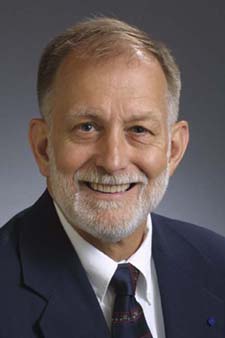 Dr. William F. Marcuson – PhD. 1970
Dr. William F. Marcuson – PhD. 1970
Dr. Marcuson joined the staff of the U.S. Army Engineer Waterways Experiment Station in 1970 and was Director of the Geotechnical Laboratory from 1981 until his retirement in 2000. His career in the Corps of Engineers included stations throughout the U.S. and overseas.
Marcuson’s research focused on experimental and analytical studies of soil behavior related to geotechnical problems, seismic design and analysis of embankment dams, and seismically induced liquefaction of soils. His contributions in civil engineering resulted in his election to the National Academy of Engineering in 1996. His election citation read: “for research and development of liquefaction, soil properties, and seismic wave propagation as applied to design analysis of earth and rock fill dams.” Marcuson’s influence as the leader of the premier US Army Research Laboratory in Geotechnical Engineering for nearly 20 years was truly impactful. Many of his contributions are now incorporated in reference books and design manuals worldwide.
Marcuson is an Honorary Member and Fellow of ASCE and served in many capacities including a term as National President in 2007. He also served as Chair of the United States National Committee for the International Society of Soil Mechanics and Geotechnical Engineering (ISSMGE). He is the only engineer to be named by the Corps of Engineers’ as Engineer of the Year twice (1981 and 1995), and the Corps also recognized him as the Civilian of the Year in 1997.
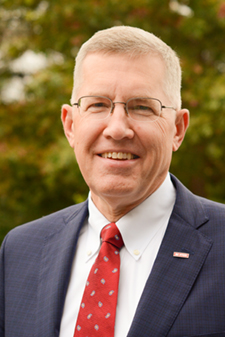 Douglas G. Morton – BSCE with construction option 1983
Douglas G. Morton – BSCE with construction option 1983
His military awards include the Navy Distinguished Service Medal, the Defense Superior Service Medal, the Legion of Merit (multiple awards), and the Bronze Star Medal.
Morton is currently NC State’s Associate Vice Chancellor for Facilities and works tirelessly in support of our infrastructure. He directs facilities planning, design, construction, operations, and development for the university’s built environment that includes more than 1,000 buildings totaling 17 million gross square feet. His division’s wide area of responsibility includes facilities services, energy systems, sustainability, fleet management, architectural and design services, infrastructure planning, construction management, mail and grounds services
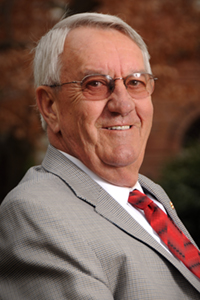 Lonnie Poole – BSCE 1959
Lonnie Poole – BSCE 1959
Lonnie Poole began his career with Ingersoll Rand and Koehring company, where he was involved in heavy construction equipment design, development and sales. This phase of his career had him traveling extensively in the country and overseas. One product he was involved in developing was a landfill compactor. His research into developing innovative products led him to conclude that the garbage business had potential, and in 1970 he returned to Raleigh and started a garbage business, called Waste Industries. The start-up of the business from 1970 to 1973 proved difficult, and he had to work part-time outside of the business in order to survive financially. Once he changed the direction of the business from managing landfills to collection, and secured financial backing to purchase 6 trucks, the company began steady growth and went public in 1997.Poole served as President of Waste Industries from 1970 to 1986. He was CEO from 1987 through 2002, and Chairman from 1987 through 2008. From its beginnings in Raleigh, Waste Industries expanded geographically and today, its three largest operations are in Denver, Colorado, Atlanta, Georgia and Raleigh.
Poole is an entrepreneur that developed both an industry and his company, Waste Industries, at the same time. The most recent market value of the company was close to $ 3 billion.
Poole has been very active in civic, community, and industry activities. In 2008 he received the NC State Watauga Medal which is awarded by the Board of Trustees to honor individuals who have made significant contributions to the advancement of the university. In 2018 he was named Outstanding Engineer of the Year by the NC Society of Engineers. He is also a founding member of the Environmental Research and Education Foundation.
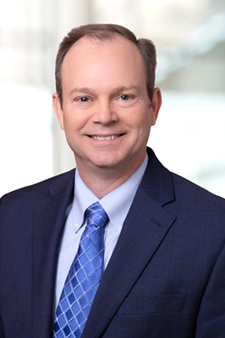 Wayne Stocks – BSCE 1986
Wayne Stocks – BSCE 1986
Wayne Stocks joined Thornton Tomasetti in 1992 and rose through the ranks until he was named President of the firm in 2019. Thornton Tomasetti is a 1,500-plus person engineering consulting firm headquartered in New York City. The company operates more than 50 offices, serving clients worldwide. As Thornton Tomasetti’s president, Wayne is responsible for financial, legal and risk management functions across the organization. Wayne has overseen the structural design, construction, and project management for a wide variety of new and historic structures. His projects include traditional design-bid-build and many fast-track projects including the Washington Nationals Major League Baseball Park, he Washington DC Convention Center, CityCenterDC, the National Public Radio New Headquarters, FORSCOM/USARC Combined Headquarters in Fort Bragg, NC, a High Performance Computing Center in Fort Meade, MD, and the Social Security Administration National Computing Center in Urbana, MD.
Stocks is passionate about giving back, which began with spending two years in Nepal volunteering with the Peace Corp immediately upon completion of his graduate degree. Now he loves sharing the excitement of engineering with the next generation. He often speaks at elementary and middle school events and volunteers at STEM events. Highlights include the Arlington County Public Schools Summer Laureate Program, “Structures” where he “lectures” third graders on bridge and building behavior in earthquakes using Legos, Tinker Toys, and a shake table (2001-2018).
Stocks was instrumental in guiding Thornton Tomasetti to support to a program called Bridges to Prosperity which resulted in constructed pedestrian bridges in Panama and Rwanda. He has also raised donations with the help of industry friends for cancer research, riding in Cycle for Survival (Memorial Sloan Kettering Rare Cancer Research), and walking in Making Strides Against Breast Cancer. He and his wife provide yearly support to DC-area homeless shelters. He’s the behind the scenes framer for his daughter’s non-profit, Home is Where the Art IS that provides original, framed artwork at no charge to people transitioning from homelessness or a shelter into their new homes.
The CCEE Alumni Hall of Fame was established in 2017 with 19 inaugural inductees. 2018 and 2019 saw 3 more each year, and in 2020 we have chosen 9 more outstanding individuals.
Induction Criteria include:
- Service to the Profession including advances to the technology or fundamental principles of the nominees chosen field or career
- Service to the Local, National, or Global Community
- Service to the University
- Service to the Welfare of Society
If you would like to nominate someone to be considered for 2021, you will find instructions and the form here. Nominations are due by June 15th of each year.

